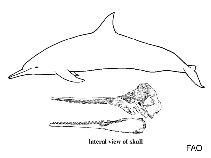Orcaella heinsohni Beasley, Robertson & Arnold, 2005
Australian snubfin dolphinWarning: DOMDocument::load(): SSL operation failed with code 1. OpenSSL Error messages: error:140770FC:SSL routines:SSL23_GET_SERVER_HELLO:unknown protocol in C:\Apache24\htdocs\includes\SpeciesSummary.lib.php on line 1236
Warning: DOMDocument::load(): Failed to enable crypto in C:\Apache24\htdocs\includes\SpeciesSummary.lib.php on line 1236
Warning: DOMDocument::load(https://sealifebase.nrm.se/webservice/AquaMaps/getAMap.php?genus=Orcaella&species=heinsohni): failed to open stream: operation failed in C:\Apache24\htdocs\includes\SpeciesSummary.lib.php on line 1236
Warning: DOMDocument::load(): I/O warning : failed to load external entity "https://sealifebase.nrm.se/webservice/AquaMaps/getAMap.php?genus=Orcaella&species=heinsohni" in C:\Apache24\htdocs\includes\SpeciesSummary.lib.php on line 1236
Uploaden van je Foto's
Google afbeelding | No image available for this species;
drawing shows typical species in Delphinidae.
Google afbeelding | No image available for this species;
drawing shows typical species in Delphinidae.
Classification / Names Common names | Synonyms | CoL | ITIS | WoRMS
| Cetartiodactyla | Delphinidae
Environment: milieu / climate zone / depth range / distribution range Ecologie
Pelagisch; diepteverspreiding 0 - 200 m, usually 1 - 10 m. Tropical; 7°S - 90°S, 100°E - 180°E
Verspreiding Landen | FAO regio's | Ecosystems | Voorkomen | Introducties
Indo-Pacific: Australia and Papua New Guinea.
Length at first maturity / Size / Gewicht / Leeftijd
Maturity: Lm ? range ? - ? cm Max length : 270 cm TL mannelijk/geslacht niet bekend; (Ref. 78832); 230 cm TL (female)
Korte beschrijving Morfologie
In lateral view the head is rounded and usually bounded by a distinct neck crease, lacking dorsal groove; mesethmoid plate reduced and generally in advance of the anterior most nasal ossicle, exposing a large area of the frontal bone; presence of supernumerary bone between nasal ossicles and posterior border of mesethmoid; has a greater length of the antiorbital process and a more closely opposed pterygoid hamuli with medial flanges.
Occurs in protected, shallow, coastal waters especially adjacent to river and creek mouths (Ref. 79537).
Life cycle and mating behavior Geslachtsrijpheid | Voortplanting | Kuitschieten | Eieren | Fecundity | Larven
Voornaamste referentie
Referenties | Coördinator | Medewerkers
Beasley, I., K.M. Robertson and P. Arnold. 2005. (Ref. 78832)
Status op de Rode Lijst van het IUCN (Ref. 130435)
Kwetsbaar, zie IUCN Rode Lijst (VU) (A2cd+3cd+4cd; C2a(i)); Date assessed: 06 June 2017
Status bij CITES (Ref. 108899)
Appendix I: International trade banned
CMS (Ref. 116361)
Appendix II: Migratory species conserved through agreements
Gevaarlijk voor mensen
Harmless
Gebruik door de mens
FAO - Visserij: landings | FishSource |
Tools
Meer informatie
Populaire namen
Synoniemen
Predators
Voortplanting
Geslachtsrijpheid
Kuitschieten
Fecundity
Eieren
Ontwikkeling van de eieren
Synoniemen
Predators
Voortplanting
Geslachtsrijpheid
Kuitschieten
Fecundity
Eieren
Ontwikkeling van de eieren
Internet-bronnen
BHL | BOLD Systems | CISTI | DiscoverLife | FAO(Visserij: ; publication : search) | Fishipedia | GenBank (genoom, nucleotide) | GloBI | Gomexsi | Google Books | Google Scholar | Google | PubMed | Tree of Life | Wikipedia (ga naar, zoek) | Zoological Record
Estimates based on models
Preferred temperature
(Ref. 115969): 26.9 - 28.8, mean 28 (based on 452 cells).



